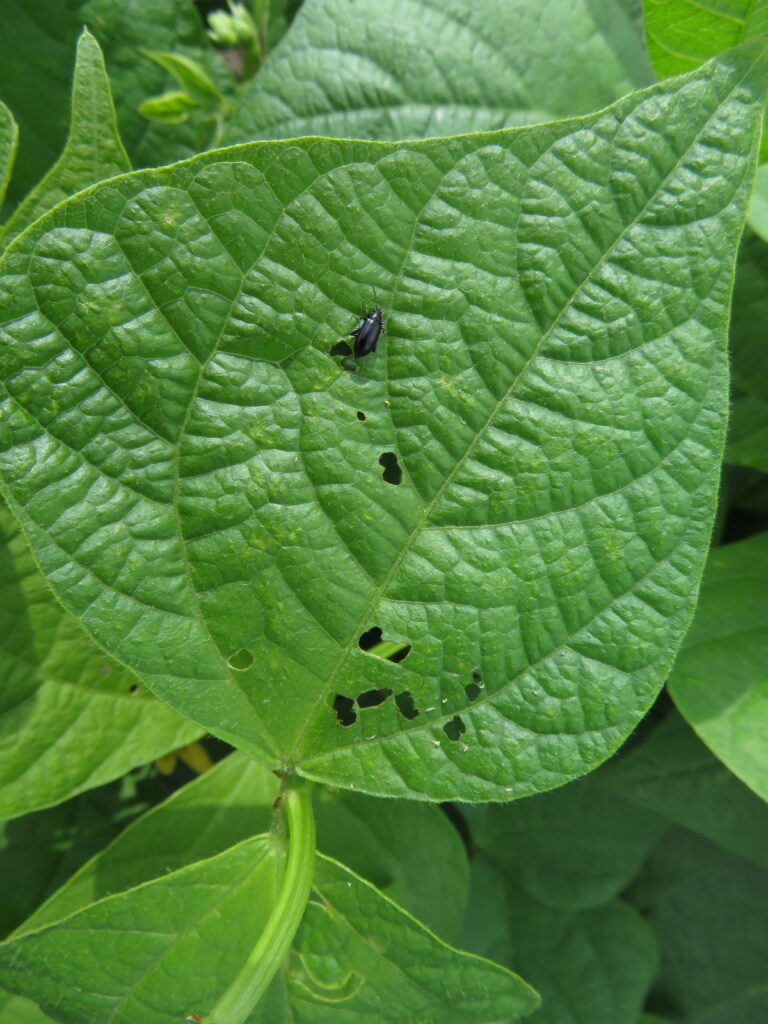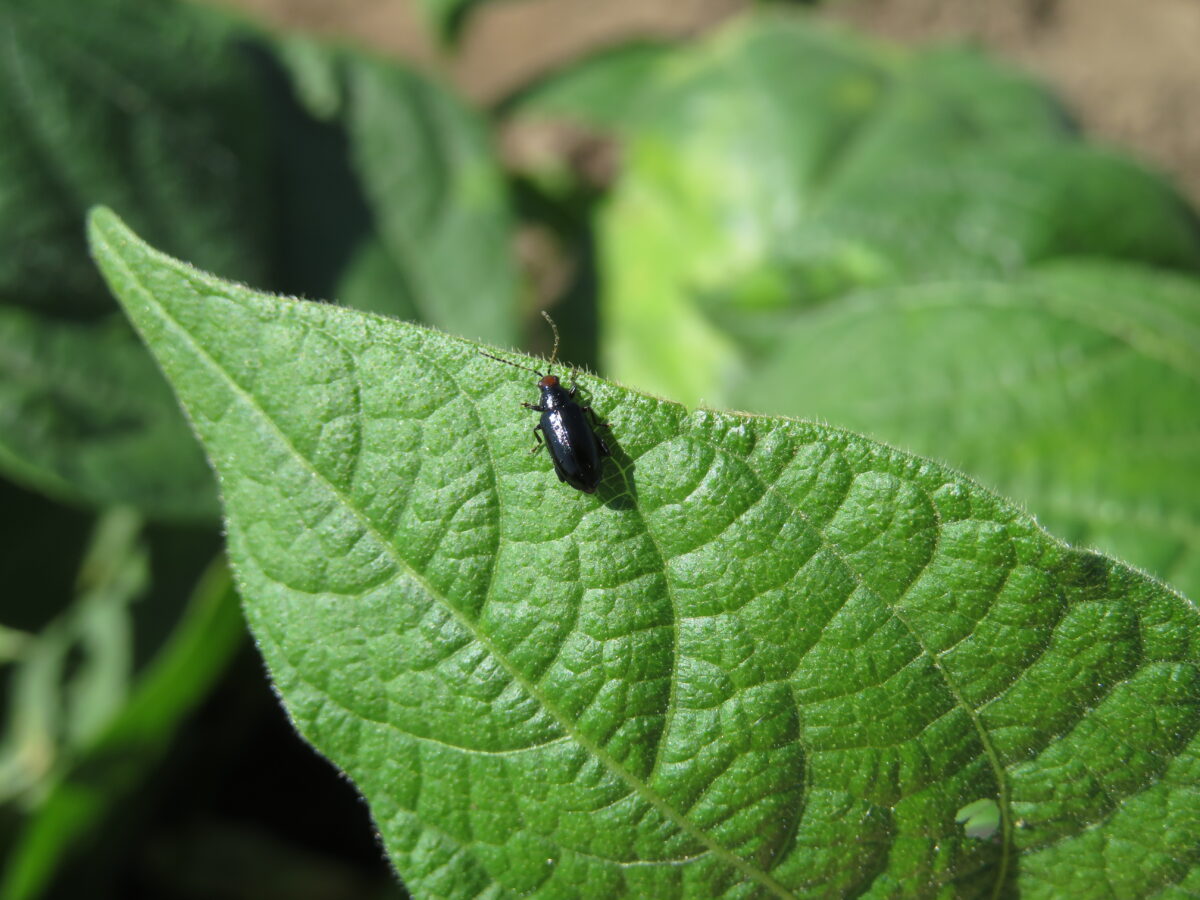Red-Headed Flea Beetle (Systena frontalis)
Description
Adults are shiny black beetles, approximately 3–6 mm in length with large hind legs used for jumping. Their body tapers towards the head which is red-orange in colour and gives them their name. Their small white larvae live in the soil and go unnoticed.
Life Cycle
Little information is available on the life cycle of red-headed flea beetles, but most sources indicate that they overwinter as eggs in the soil. Larvae hatch in early spring and feed on root hairs. Adults emerge from the soil and are present in many different crops from late June until early September.
Damage
Red-headed flea beetle feed on foliage. Defoliation is rarely at threshold levels across a field of dry beans in Ontario. The same threshold is used for all defoliating insects. The decision to spray comes down to how much defoliation is occurring prior to pod-fill, and is not based on the number of insects per plant, though the insect still needs to be present and actively feeding for the application to be cost effective.
| Bean Growth Stage | Defoliation Threshold |
| Prior to bloom (vegetative stages) | 35% |
| After bloom up to pod-fill | 15% |

